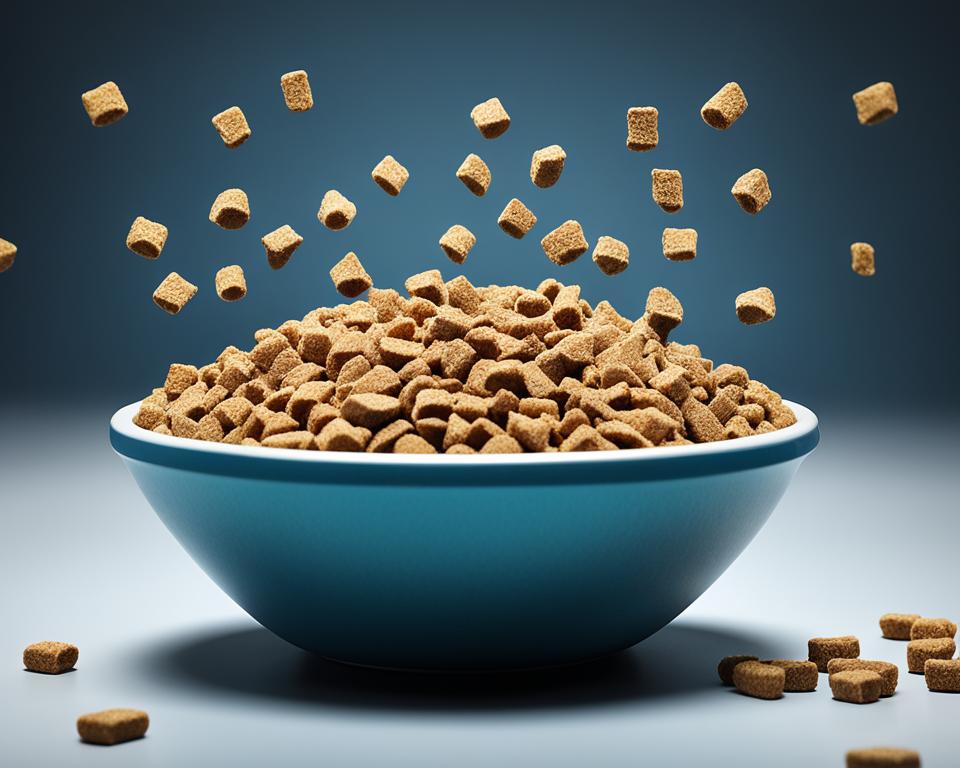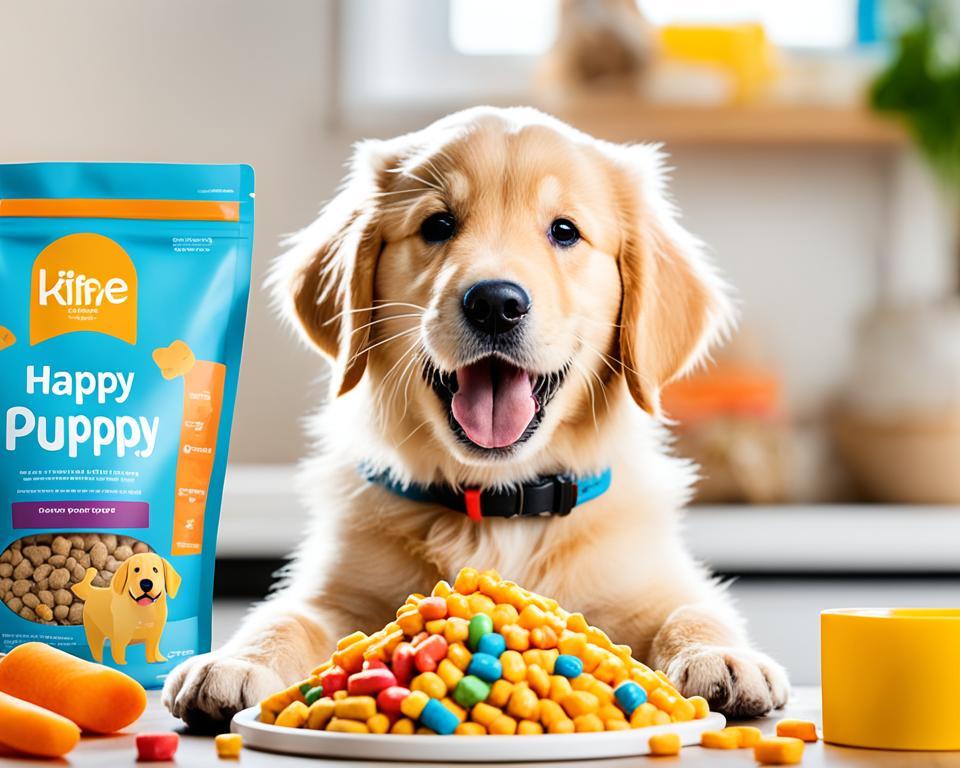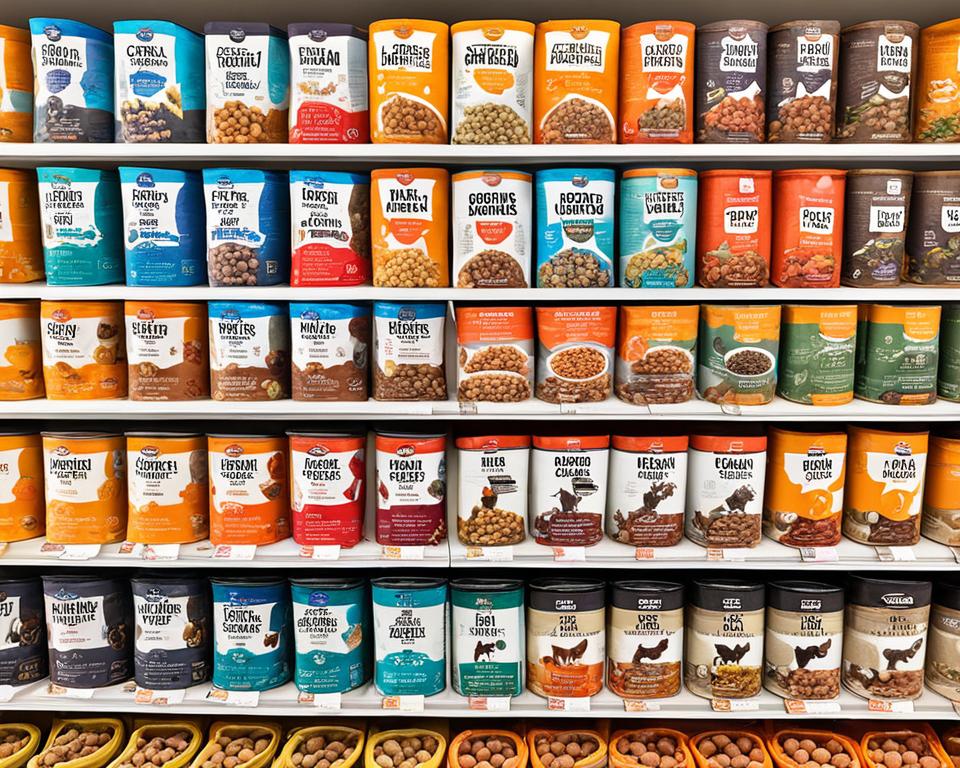Finding the right food for our furry friends is key. With so many options, it can be hard to pick. But I’m here to guide you through the world of dog food.
Did you know 80% of pet owners see their dogs as family? Choosing the best dog food is important for their health and happiness. Let’s look at how to pick food that will keep your dog happy and healthy.
In recent years, there’s been a 40% jump in demand for dog foods with real meat, fruits, and veggies. Pet parents are getting smarter about what goes into their dogs’ food. Let’s explore what makes great dog food and how to find it.
Understanding the Importance of Quality Dog Nutrition
Quality nutrition is key for your dog’s health and happiness. It’s not just about filling their bowl. It’s about giving them the right nutrients for their well-being.
The Role of Balanced Nutrients in Canine Health
A balanced diet keeps your dog healthy. The AAFCO says dog food should have at least 22% protein for growth and 18% for maintenance. This helps your pup have strong muscles and a healthy immune system.
How Proper Diet Affects Your Dog’s Energy and Longevity
Feeding your dog the right food boosts their energy and lifespan. Dogs on a balanced diet are more active and playful. Quality food helps with better digestion, skin, coat, and vitality.

Key Nutrients Every Dog Needs
Every dog needs certain nutrients to do well. Here’s what’s important in a dog’s diet:
| Nutrient | Function | Sources |
|---|---|---|
| Proteins | Muscle development and repair | Meat, fish, eggs |
| Fats | Energy and coat health | Oils, meat fats |
| Carbohydrates | Energy and digestion | Grains, vegetables |
| Vitamins | Metabolism and immune function | Fruits, vegetables |
| Minerals | Bone health and cellular function | Meat, dairy, vegetables |
Healthy dog treats can be good supplements, but they should be less than 10% of their daily calories. By choosing quality food and knowing your pet’s needs, you help them live a happy, healthy life.
Dog Food Types: Dry, Wet, and Raw Options
I’ve looked into different dog food types to help you pick the best for your pet. There are many products out there, like dry kibble, wet food, and raw diets. Each type has its own benefits and things to think about.
Pros and Cons of Kibble (Dry Dog Food)
Dry dog food is a top pick for many owners. It’s easy to use, doesn’t cost much, and helps keep your dog’s teeth clean. Most dry foods have about 10% moisture, making them simple to store. They also often have live probiotics for better digestion. Plus, it’s perfect for food puzzles, which can make your dog’s mind work.

Benefits of Wet Dog Food
Wet dog food has a lot of moisture, around 78%. This is good for dogs with bladder problems or those who don’t drink enough water. It tastes better, which is great for picky eaters or dogs that don’t eat much. Wet food also helps dogs feel full, which can help with weight control.
Raw Dog Food: A Growing Trend
Raw dog food is getting more popular fast. It’s made from raw meat, bones, fruits, and veggies. Many think it’s the closest thing to a dog’s natural diet. But, it needs to be handled and stored safely. Some brands now offer easy-to-use raw options, making it easier for owners to try.
- Dry food is easier to portion and store
- Wet food is more palatable and hydrating
- Raw diets are perceived as more natural
The best choice depends on what your dog needs. Talk to your vet to find the right food for your pet.
Tailoring Dog Food to Your Pet’s Life Stage
Dogs have different dietary needs at various life stages. As a pet owner, I’ve found it key to pick the right food for my pet’s health and joy. Let’s look at how to match canine nutrition with age.
Nutritional Needs for Puppies
Puppies need food full of energy and nutrients for their fast growth. I feed my puppy foods rich in proteins, fats, and calories. This helps with bone, muscle, and brain growth.

Adult Dog Dietary Requirements
When my dog grows up, I change their diet for their best health. Adult dog food has balanced nutrition with the right amount of protein and fat. This keeps their energy up, supports muscles, and keeps them well.
Senior Dog Food Considerations
As my dog gets older, their diet changes again. Senior dog food has ingredients for joint and brain health. I choose foods with easy-to-digest proteins and supplements like glucosamine for joints.
| Life Stage | Key Nutritional Focus | Recommended Protein Level |
|---|---|---|
| Puppy | Growth and Development | 28-32% |
| Adult | Maintenance | 18-25% |
| Senior | Joint and Cognitive Health | 22-28% |
Every dog is different. I always talk to my vet to make a diet plan that fits my pet’s needs. By changing their diet as they age, I keep my furry friend healthy and happy for a long time.
Special Dietary Considerations for Dogs
Every dog is different when it comes to food. Some need special diets because of allergies, health issues, or weight concerns. Knowing about these options can really help our dogs.
Grain-Free Dog Food: Pros and Cons
Grain-free dog food is a big topic. It helps dogs with grain allergies. But, it’s not right for all dogs. These foods use sweet potatoes instead of grains.
It’s important to think about the good and bad before switching. Always talk to a vet first. And watch out for recalls, especially with special diets.
Hypoallergenic Dog Food Options
For dogs with food sensitivities, special foods can change everything. These foods have new proteins to reduce allergic reactions. Some brands offer diets with fewer ingredients to help avoid allergies.
What works for one dog might not work for another. So, you might need to try a few options.
Weight Management Dog Food
Keeping our dogs at a healthy weight is key for their health. These foods have fewer calories and more fiber to help them feel full. Some people add toppers to make these foods tastier without adding extra calories.
When changing your dog’s diet, do it slowly and watch how they react.

